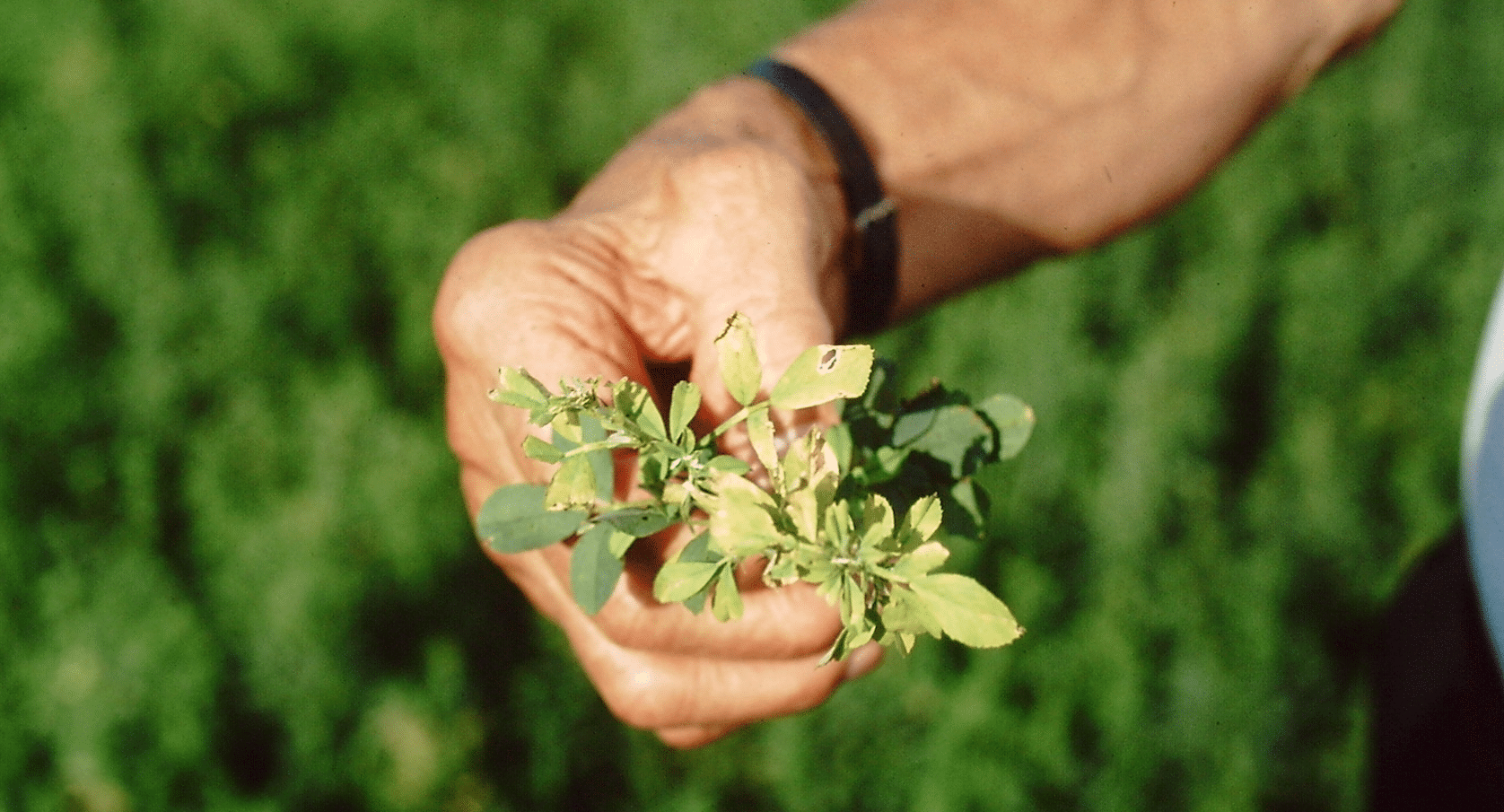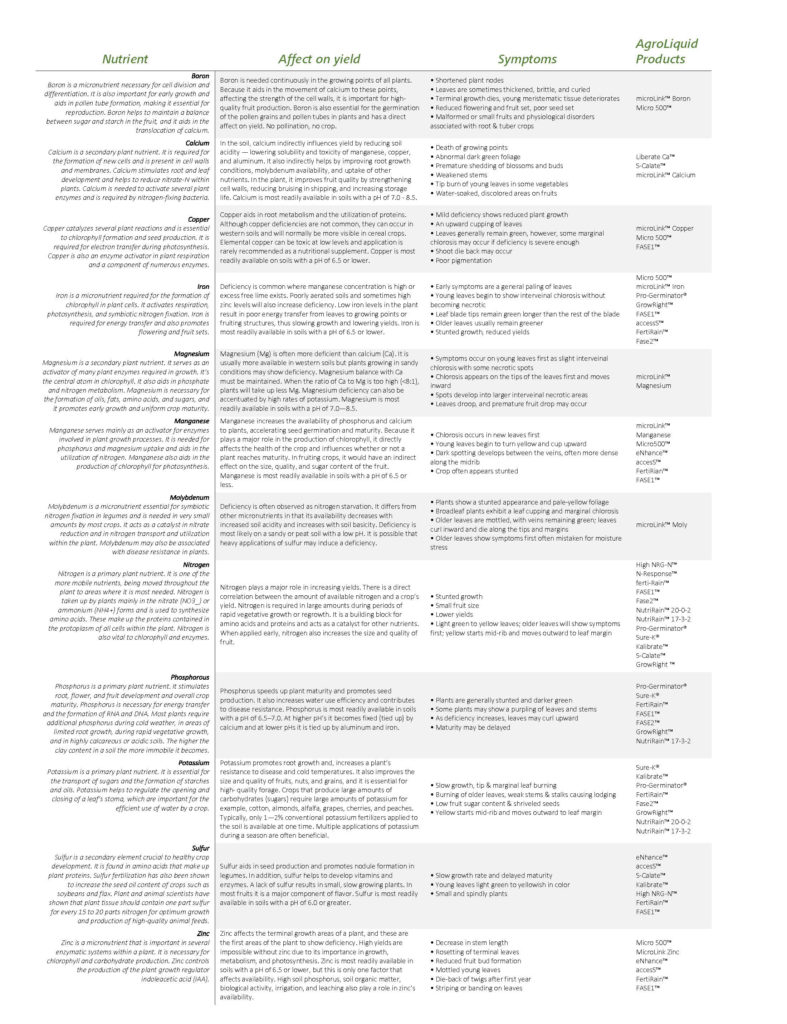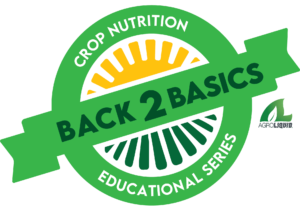
Each spring, producers enter the field with an aspiration to produce a high-quality crop with high yields. While many aspects of the growing season are beyond control, like weather conditions, other factors such as nutrient management are controllable and important to understand. The knowledge to identify warning signs of nutrient deficiencies and how to combat them is an important step toward producing a stellar yield at the end of each growing season.
Affect on crop yield
The soil type and pH of a soil also play a role in the availability of many nutrients to a plant. Knowing a soils pH is a great guideline in knowing which nutrient may be deficient. An acidic soil, for instance, with a pH of anything 6.5 or below may be limiting for primary and secondary nutrients, whereas in a basic soil with a pH above 8 many micronutrients will be less available for plant absorption.
All nutrients in a plant profile, be it a primary, secondary, or micronutrient, holds a key role in the plant’s growth and overall potential. A balancing act – a deficiency of one nutrient can play a major role in the availability of other nutrients to the plant. In order to get the most from a crop it is essential to have a correct balance of nutrients working within the plant. Deficiencies of any one nutrient can cause a loss of yield in multiple ways including through reduced vegetative growth, plant size, and fruit production. Every nutrient plays a different role and deficiencies affect a plant in a different way.
Symptoms
Once a crop is above ground there is a number of tell-tale signs of nutrient deficiencies to watch for. Some of the most obvious visual symptoms of a lack of nutrient availability are leaf discolorations, stunted plant growth, and reduced yields. Because each nutrient has a specific function within a plants processes each deficiency will have its own unique characteristics. Some deficiencies, such as manganese symptoms occur in new leaves first, while a nutrient like potassium will show as burning in older leaves.
For the best crop yields, producers need to be able to recognize the signs of nutrient deficiencies in their fields. It is important to perform a soil test to determine the level of nutrients available to crops, regulate deficiencies, and decide how to combat them before they become detrimental to your yield and profitability.
When questions arise about your crops needed nutrients or deficiencies, contact your AgroLiquid representative or visit us at AgroLiquid.com.
Back 2 Basics
A great, free, resource to learn all about the role that different nutrients play in plant health and development is the Back 2 Basics video series. These short videos take an in-depth look at each of the nutrients that may make a difference in a crop and help to understand the role that each plays. Learning the ins and outs of how one nutrient interacts with another in the soil is a key step in meeting a plants full potential. Register for the Back 2 Basics series and receive a notification when new episodes become available.



